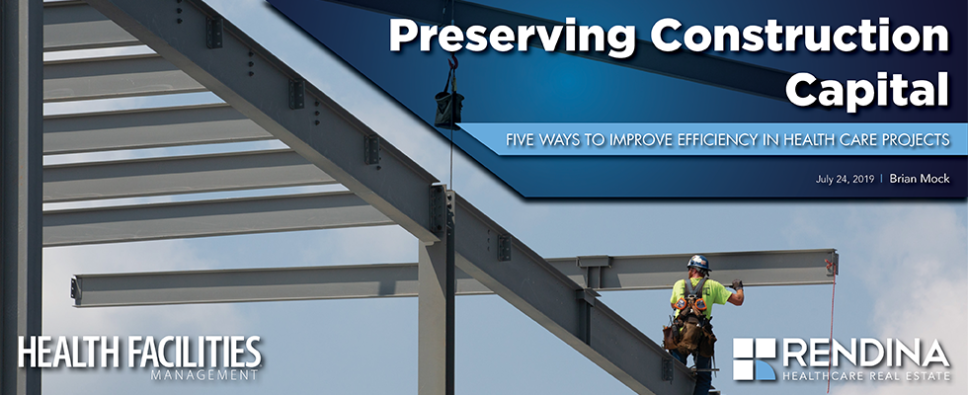Brian Mock, Executive Vice President of Construction and Development at Rendina Healthcare Real Estate was recently published in Health Facilities Magazine. Check out excerpts of the article below and follow this link to read the full article.
Hospitals and health systems must evolve their bricks-and-mortar investments to adapt to patient preferences as more care moves out of the hospital and toward outpatient facilities.
That evolution often involves expensive greenfield construction or extensive retrofitting of existing space, which poses its own unique challenges. Cost is a chief concern, but minimum design specifications that govern building size and scale are also extremely important and can limit flexibility.
Yet with careful planning and execution, budgetary limitations can be met successfully.
Five Rules
Don’t let common mistakes trip you up. When making the important decisions that are critical to a project’s success, adhere to the following five rules to preserve capital during health care facility development.
1. Choose the right design partner.
Having the right team assembled on the front end will reduce or avoid hidden costs and likely eliminate the need to redesign after construction has begun, which is sometimes necessary, but is expensive and can lead to delays.
2. Set an aggressive schedule.
It is critical to map out completion dates on specific components of the project, noting where components depend on progress made in other areas. Then the development team must work diligently to meet those milestones, because delayed completion of one step inevitably trickles down through the schedule to impact many others.
3. Regionalize the design.
Building projects in the Northeast is completely different from building them in South Florida. It’s important to have regional experience to navigate the different construction design standards that are native to a project’s location.
4. Challenge overdesigns.
Health care leaders must be careful not to overdesign significant parts of their facilities and make sure they are designing each functional space for a specific use.
5. Use design-side technology.
Building virtually before beginning actual construction can identify potential stumbling blocks and conflicts uncovering incompatible pieces of the puzzle well before construction equipment and workers begin their tasks.
Good stewardship
Hospitals and health systems are increasingly measured on efficiency and safety in a multitude of arenas, and their construction projects should be no different. Minimizing mistakes is critical to good stewardship of precious capital and following these five rules will ensure a much more efficient deployment of capital than would otherwise be possible






















